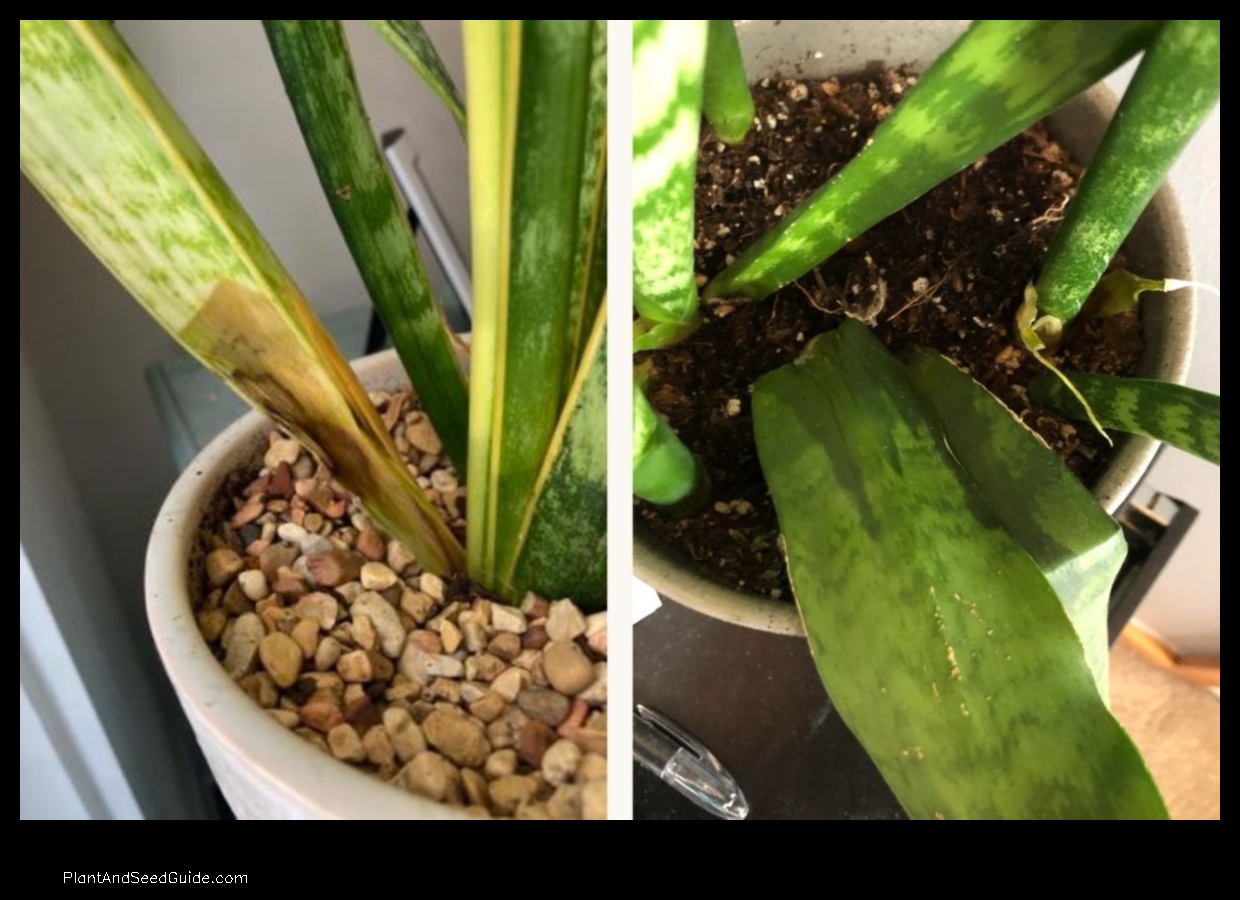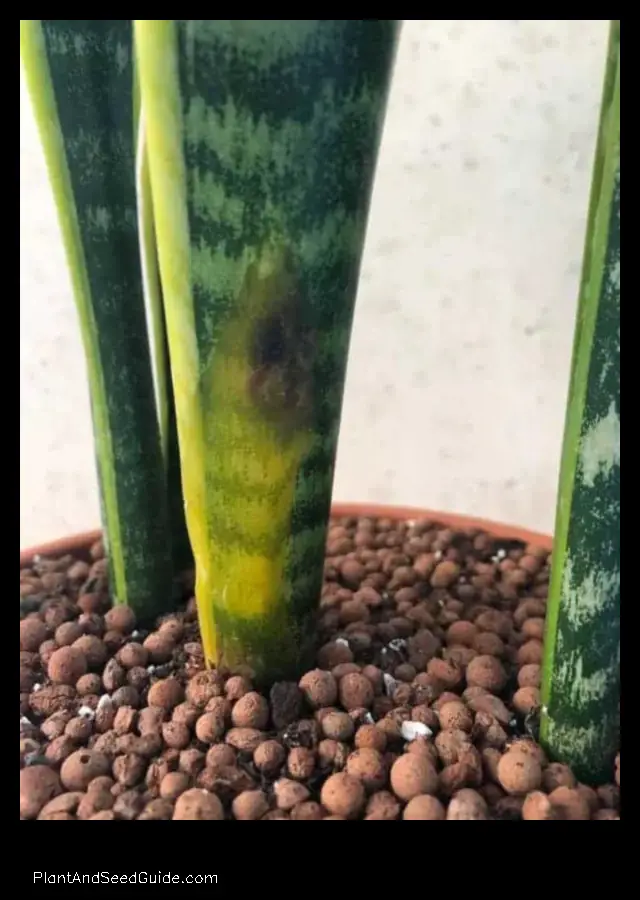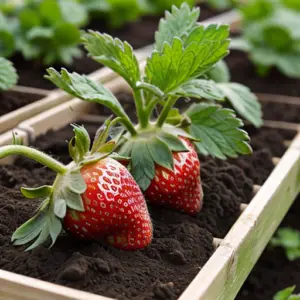
Symptoms of Overwatered Snake Plants
An overwatered snake plant will have the following symptoms:
- Wilted leaves
- Yellowing leaves
- Soft, mushy leaves
- Root rot

ICauses of Overwatering Snake Plants
There are a few reasons why snake plants may be overwatered:

- Overwatering is the most common cause of overwatering snake plants.
- Potting snake plants in soil that is too dense and holds too much water can also lead to overwatering.
- Planting snake plants in pots that are too large can also lead to overwatering.
- Snake plants that are not given enough light are more likely to be overwatered.
How to Fix Overwatered Snake Plants
If you think your snake plant is overwatered, there are a few things you can do to help it recover:
- First, stop watering the plant completely.
- Remove the plant from its pot and check the roots for signs of rot.
- If the roots are healthy, repot the plant in fresh soil.
- If the roots are rotted, cut away the rotted roots and repot the plant in fresh soil.
- Place the plant in a bright, indirect light location.
- Water the plant only when the soil is dry to the touch.
How to Prevent Overwatering Snake Plants
To prevent your snake plant from becoming overwatered, you can follow these tips:
- Water the plant only when the soil is dry to the touch.
- Use a pot with drainage holes to allow excess water to drain away.
- Pot the plant in soil that is well-draining and does not hold too much water.
- Place the plant in a bright, indirect light location.
Snake Plant Care Tips
In addition to following the tips above, here are some other general snake plant care tips:
- Snake plants are drought-tolerant plants and can tolerate periods of drought.
- Snake plants do not need to be fertilized often.
- Snake plants are not susceptible to many pests or diseases.
VFAQ
Q: What does an overwatered snake plant look like?
An overwatered snake plant will have wilted leaves, yellowing leaves, soft, mushy leaves, and root rot.
Q: How do I fix an overwatered snake plant?
To fix an overwatered snake plant, you can follow these steps:
- Stop watering the plant completely.
- Remove the plant from its pot and check the roots for signs of rot.
- If the roots are healthy, repot the plant in fresh soil.
- If the roots are rotted, cut away the rotted roots and repot the plant in fresh soil.
- Place the plant in a bright, indirect light location.
- Water the plant only when the soil is dry to the touch.
Q: How can I prevent my snake plant from becoming overwatered?
To prevent your snake plant from becoming overwatered, you can follow these tips:
- Soft, mushy leaves
- Yellow or brown leaves
- Root rot
- Wilting
- Smell of rot
- Water your snake plant only when the soil is dry to the touch.
- Use a pot with drainage holes to help excess water drain away.
- Repot your snake plant into a pot that is the right size for its roots.
- Avoid overfertilizing your snake plant.
- Place your snake plant in a spot where it receives bright, indirect sunlight.
- Watering too often
- Using too much water
- Planting your snake plant in a pot that is too large
- Not allowing excess water to drain away
- Overfertilizing your snake plant
- Soft, mushy leaves
- Yellow or brown leaves
- Root rot
- Wilting
- Smell of rot
- Stop watering your snake plant for a few weeks.
- Repot your snake plant into a pot that is the right size for its roots.
- Prune away any damaged leaves or roots.
- Treat your snake plant with a fungicide to prevent root rot.
- Soft, mushy leaves
- Yellow or brown leaves
- Root rot
- Wilting
- Smell of rot
- Water your snake plant only when the soil is dry to the touch.
- Use a pot with drainage holes to help excess water drain away.
- Repot your snake plant into a pot that is the right size for its roots.
- Avoid overfertilizing your snake plant.
- Place your snake plant in a spot where it receives bright, indirect sunlight.
- A black, mushy growth on the roots of the plant
- The plant may wilt or die
| Symptoms of Overwatered Snake Plants | Snake Plant Care Tips |
|---|---|
|
|
|
| Causes of Overwatering Snake Plants | Signs of Overwatering |
|
|
|
| How to Fix Overwatered Snake Plants | Overwatered Plants |
|
|
|
| How to Prevent Overwatering Snake Plants | Root Rot |
|
|
|
ISymptoms of Overwatered Snake Plants
Overwatered snake plants may exhibit the following symptoms:
- Wilted leaves
- Yellowing leaves
- Soft, mushy leaves
- Root rot

Symptoms of Overwatered Snake Plants
Overwatered snake plants may exhibit the following symptoms:
Wilted leaves. When a snake plant is overwatered, its leaves will begin to wilt and droop. This is because the excess water is causing the roots to rot, which in turn prevents the plant from absorbing the nutrients and water it needs to stay healthy.
Yellowing leaves. Another sign of overwatering is yellowing leaves. This is because the excess water is causing the leaves to become waterlogged and damaged.
Soft, mushy leaves. If the overwatering is severe, the leaves of the snake plant may become soft and mushy. This is a sign that the roots have rotted and the plant is dying.
Root rot. If you remove the snake plant from the pot, you may be able to see that the roots are brown and mushy. This is a sure sign that the plant has been overwatered.
How to Fix Overwatered Snake Plants
If you suspect that your snake plant is overwatered, there are a few things you can do to help it recover.
- First, you need to stop watering it. This may seem counterintuitive, but it’s important to give the plant a chance to dry out.
- Next, you need to remove any excess water from the pot. You can do this by carefully tipping the pot upside down and allowing the excess water to drain out.
- If the roots of your snake plant are soggy or mushy, you will need to repot it in fresh soil. When repotting, be sure to use a well-draining soil mix.
- Finally, you need to make sure that you are watering your snake plant correctly in the future. Water it only when the soil is dry to the touch.
Snake Plant Care Tips
Here are some tips for caring for your snake plant:
- Water your snake plant only when the soil is dry to the touch.
- Fertilize your snake plant once a month during the growing season.
- Repot your snake plant every two to three years.
- Place your snake plant in a bright, indirect light location.
- Avoid overwatering your snake plant, as this can lead to root rot.
What Does an Overwatered Snake Plant Look Like?
An overwatered snake plant will have a number of visual symptoms, including:
Wilted leaves
Yellowing leaves
Soft, mushy leaves
Root rot
If you notice any of these symptoms, it is important to take action to save your plant.
To learn more about how to identify and treat an overwatered snake plant, please read our comprehensive guide: How to Save an Overwatered Snake Plant.
What Does an Overwatered Snake Plant Look Like?
Overwatered snake plants may exhibit the following symptoms:
- Wilted leaves
- Yellowing leaves
- Soft, mushy leaves
- Root rot
If you notice any of these symptoms, it is important to take action to correct the problem as soon as possible.
What Does an Overwatered Snake Plant Look Like?
Overwatered snake plants will have a number of visual symptoms, including:
- Soggy, drooping leaves
- Yellow or brown leaves
- Root rot
- A musty smell
If you notice any of these symptoms, it is important to take action to correct the problem as soon as possible. Overwatering can quickly lead to root rot, which can kill your snake plant.
To fix an overwatered snake plant, you will need to:
- Repot the plant in fresh, dry soil
- Water the plant less frequently
- Provide good drainage
By following these steps, you can help your snake plant recover from overwatering and prevent future problems.
An overwatered snake plant will have the following visual symptoms:
- The leaves will be droopy and limp.
- The leaves will be yellow or brown.
- The leaves will be mushy or soft to the touch.
- The soil will be wet and soggy.
- The roots will be brown and mushy.
If you see any of these symptoms, it is important to take action to fix the problem immediately.
What Does an Overwatered Snake Plant Look Like
Overwatered snake plants are a common problem, but it can be difficult to know if your plant is getting too much water. Here are some of the visual symptoms of an overwatered snake plant:
The leaves will start to turn yellow and wilt.
The leaves may develop brown spots.
The roots may become mushy and black.
The plant may start to smell bad.
If you notice any of these symptoms, it’s important to take action to reduce the amount of water you’re giving your snake plant.
FAQ
Q: What are the causes of overwatering snake plants?
A: There are a few things that can cause snake plants to be overwatered. These include:
Giving the plant too much water. This is the most common cause of overwatering snake plants. It’s important to only water your snake plant when the soil is dry to the touch.
Planting the snake plant in a pot that is too large. A pot that is too large will hold too much water, which can lead to the roots becoming waterlogged.
Not allowing the soil to drain properly. If the soil is not able to drain properly, the roots will stay wet for too long, which can lead to overwatering.
Q: How can I fix an overwatered snake plant?
A: If you think your snake plant is overwatered, there are a few things you can do to help it recover. These include:
Reduce the amount of water you’re giving the plant. Only water your snake plant when the soil is dry to the touch.
Repot the plant in a pot that is the correct size. A pot that is too large will hold too much water, which can lead to the roots becoming waterlogged.
Improve the drainage of the soil. If the soil is not able to drain properly, the roots will stay wet for too long, which can lead to overwatering.
Q: How can I prevent my snake plant from being overwatered?
A: There are a few things you can do to prevent your snake plant from being overwatered. These include:
Only water the plant when the soil is dry to the touch. This is the most important thing you can do to prevent overwatering.
Plant the snake plant in a pot that is the correct size. A pot that is too large will hold too much water, which can lead to the roots becoming waterlogged.
Make sure the soil is able to drain properly. If the soil is not able to drain properly, the roots will stay wet for too long, which can lead to overwatering.
- Wild Rose Country: Exploring Untamed Beauty - July 15, 2024
- Wildflower Nursery Decor: Bringing Nature Indoors - July 15, 2024
- Young Sprout of Grass: Nurturing New Life - July 15, 2024









